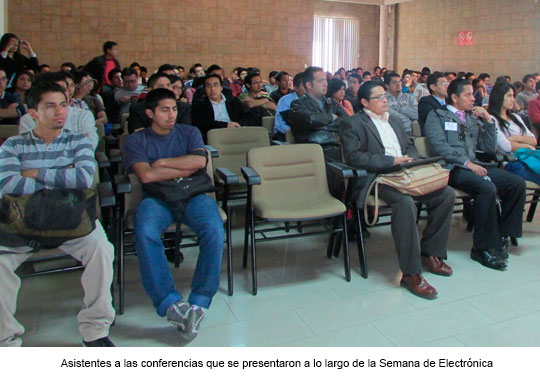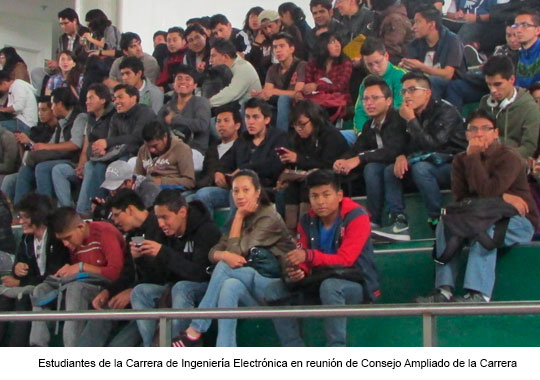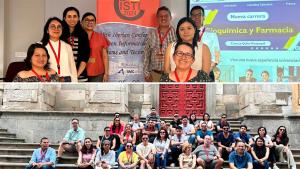QUITO: Proyectos de innovación tecnológica fueron presentados en la "Semana de Ingeniería Electrónica"
QUITO: Proyectos de innovación tecnológica fueron presentados en la "Semana de Ingeniería Electrónica"

Various technological innovation projects were presented during the “Electronic engineering week”
The university will be holding the “Electronic engineering week” in Quito from July 2nd – July 4th, 2014 due to the university’s 20th foundation anniversary. A board meeting with students, teachers and authorities initiated this academic event which took place in the Unidad Educativa Quitumbe’s coliseum. Viviana Montalvo, UPS-Quito Vice president, German Arevalo, Science and technology coordinator, and Sonia Guaño, director of the electronic engineering major, were some of the guests at this event.
Guaño said that she expects the number of engineering graduates to double by the end of the year and added that the University’s analog, circuits, civil and telecommunications laboratories are among the best in the country. She said they have invested $657,000 to strengthen the control and the hydraulics laboratories. She also discussed the new academic regime regulations.
The UPS-Quito Vice president spoke about the evaluation processes the university has gone through and said the university has made a great effort to work with excellence. “The university currently has 549 professors, 332 of them work full time, 309 of them hold a master’s degree and 20 a PHD degree” she said.
Here are some of the conferences that were presented during the Electronic Engineering week:
ADVANTAGES OF THE USE OF VCSEL OVER RSOA FOR UPLINK TRANSMISSION ON WDM-PON NETWORKS: German Arevalo spoke about new generation access networks which will allow data to be transferred from home.
IMPROVING ASSISTANCE TO DISABLED PEOPLE BY IMPLEMENTING HOME AUTOMATION THROUGH KINECT SENSORS. ,Victor Vinicio Tapia spoke about a tool that helps disabled people with the use of NIU.
La temática BUILDING TELEMEDICINE AND BIOENGINEERING SYSTEM Vinicio Changoluisa explained the benefits of telemedicine.
ELECTRONIC DATA GLOVE WITH INERTIAL SENSORS, OPEN SOURCE TOOLS, AND WIRELESS COMMUNICATION THAT INTERACTS WITH 3D IMAGES USED FOR VIRTUAL MEDICAL TRAINING. Was presented by Washington Ramirez; this is tool that enables medical students to learn the body’s structure through 3D images of the human body.
TEM CHARACTERIZATION OF ZNO CRYSTALS SYNTHESIZE WITH CONTROLLED SIZE ANDA MORPHOLOGY, was presented by Sonia Guaño. She explained the development of blue and green light emitting diodes. This is a study which derives from the Master’s degree at the Universidad Católica de Río de Janeiro with the support of Arizona State University.
PAPER COMPARISION BETWEEN CONVENTIONAL OFDM AND FAST-OFDM ON RADIO OVER FIBER APPLICATIONS Milton Tipan spoke about the possibility of having all the applications people need, such as data, telephone, internet, and video in their home through one means – Optical Fiber.
The “GEOPORTAL SALESIANO” was presented by Gustavo Navas. Students were also given the opportunity to present their own projects: Lighting system of an automobile based on microcontrollers; A minisumo robot build with digital logic; Intelligent flower using photo sensors; A sliding gate; Water pump; and An energy saving smart home, are only some of the 50 projects that were presented.
Por: Mayra Aguirre, Rosa Elena Procel y Catherine Peralta, redacción web






Follow us
Follow us